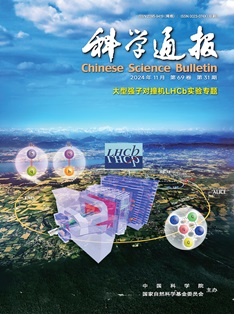Development, fabrication, and applications of biomedical electrodes
引用次数: 5
Abstract
Biomedical electrodes convert the ion potential generated by electrochemical activities into an electronic potential that can be measured by instrumentation systems; they are widely used as sensors in modern clinical detection and biomedical measurement. In recent years, with increasing applications in the fields of electrocardiography (ECG), electroencephalography (EEG), electromyography (EMG), and electrical impedance tomography (EIT), a great number of new biomedical electrodes with novel structural design and new material selection have been explored and developed; low-cost fabrication methods are also being intensively studied. In this paper, biomedical electrodes are classified into five types, including traditional silver/silver chloride electrodes, microneedle electrodes, flexible textile electrodes, foam electrodes, and insulated dry electrodes. The conversion mechanisms from ion potential to electronic potential of different biomedical electrodes described in the prior literature are firstly introduced, and then the latest research results concerning the fabrication processes for different biomedical electrodes, and the methods of using them, are reviewed. The advantages and disadvantages of each type of electrode for practical applications are discussed, based on the published literature. A general description of the current applications of biomedical electrodes in ECG, EEG, EMG, and EIT is presented. Typical results from researchers in various countries are reviewed to further introduce the detailed application of different biomedical electrodes. Emerging application fields for biomedical electrodes, such as electrooculography, electrogastrography, and the study of the nervous system, are also presented. Finally, the development and application prospects of biomedical electrodes are described briefly. With the rapid development of microelectronics, micro-nano manufacturing and signal processing technology, the related manufacturing technologies and signal processing methods for biomedical electrodes have achieved great progress; in particular, a much deeper understanding about the contact mechanism with human tissue and skin has been obtained. We believe that many new biomedical electrodes will be developed in the next few years to greatly improve the detection level of bioelectric information.生物医学电极的开发、制造和应用
生物医学电极将电化学活动产生的离子电位转化为可由仪器系统测量的电子电位;它们作为传感器广泛应用于现代临床检测和生物医学测量中。近年来,随着在心电图(ECG)、脑电图(EEG)、肌电图(EMG)、电阻抗断层扫描(EIT)等领域的应用越来越广泛,大量结构设计新颖、材料选择新颖的新型生物医学电极被探索和开发出来;低成本的制造方法也正在深入研究中。本文将生物医学电极分为五种类型,包括传统的银/氯化银电极、微针电极、柔性纺织电极、泡沫电极和绝缘干电极。首先介绍了现有文献中不同生物医学电极的离子电位到电子电位的转换机理,然后综述了不同生物医学电极的制备工艺及其使用方法的最新研究成果。根据已发表的文献,讨论了实际应用中每种电极的优缺点。概述了目前生物医学电极在ECG、EEG、EMG和EIT中的应用。综述了各国研究人员的典型成果,进一步详细介绍了不同生物医学电极的应用。生物医学电极的新兴应用领域,如眼电图、胃电图和神经系统的研究,也被介绍。最后简要介绍了生物医学电极的发展和应用前景。随着微电子、微纳制造和信号处理技术的快速发展,生物医学电极的相关制造技术和信号处理方法取得了长足的进步;特别是,对人体组织和皮肤的接触机制有了更深入的了解。我们相信,未来几年将会开发出许多新的生物医学电极,大大提高生物电信息的检测水平。
本文章由计算机程序翻译,如有差异,请以英文原文为准。
求助全文
约1分钟内获得全文
求助全文
来源期刊

Chinese Science Bulletin
综合性期刊-综合性期刊
自引率
0.00%
发文量
31457
审稿时长
2.6 months
期刊介绍:
Chinese Science Bulletin (CSB) was established in 1950 and is currently published three issues every month. It is indexed by Ei Compendex, ESCI (Emerging Sources Citation Index)and Chinese Science Citation Database (CSCD),etc. CSB is a multidisciplinary academic journal supervised by the Chinese Academy of Sciences (CAS) and co-sponsored by the CAS and National Natural Science Foundation of China (NSFC). CSB is committed to rapidly reporting the most advanced developments in natural sciences and engineering and to serving the scientific community with valuable insights into upcoming trends.
 求助内容:
求助内容: 应助结果提醒方式:
应助结果提醒方式:


